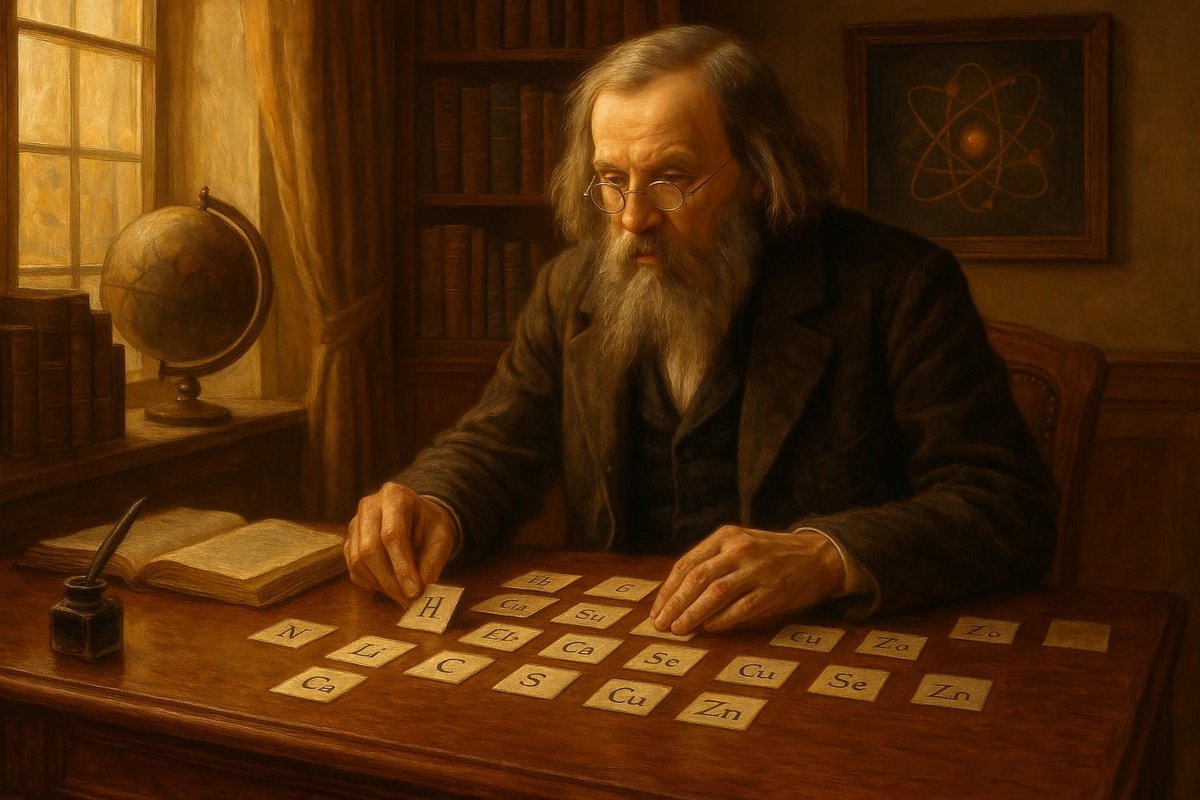
Origin: The Humble Beginnings of Chemical Order
In the mid-19th century, the world of chemistry was a chaotic place. Elements were known but not understood. Imagine a puzzle with pieces scattered across a table, each one significant but lacking a unifying picture. Interestingly, many chemists began to notice patterns—much like the repeating verses in music, suggesting a chorus waiting to be discovered.
- In the 1800s, only 63 elements were known, each a mystery with its own unique properties.
- The quest for order seemed as elusive as catching a shadow.
- Early attempts by Johann Döbereiner grouped elements in triads with similar properties, offering a glimmer of hope.
This period of wonder and confusion set the stage for a scientific breakthrough. As time passed, the need for a systematic approach became undeniable, much like the way society craves order in chaos. The cultural thirst for knowledge and understanding was palpable, laying the groundwork for the revolutionary insights that would soon follow.
Key Figures: Visionaries Who Shaped the Table
As Europe buzzed with intellectual fervor, a Russian chemist named Dmitri Mendeleev began weaving an idea that would forever change the way we see the universe. Born in 1834 in Siberia, Mendeleev was driven by curiosity and resilience—a man as complex and layered as the elements themselves.
- Mendeleev was known for his methodical nature, often spending days absorbed in thought and experimentation.
- He ingeniously left gaps in his table, predicting elements yet to be discovered—a bold move that would later prove prophetic.
- Sir William Ramsay, a Scottish chemist, expanded the table by discovering noble gases, enriching its narrative.
These pioneers were not isolated geniuses but part of a broader cultural movement where scientific exploration was akin to artistry. They sketched the first lines on a canvas that would eventually display the elegant order of the elements. Their work was a testament to human ingenuity, bridging gaps between known and unknown.
Turning Point: From Chaos to Predictable Patterns
It was 1869, a year that would become a turning point in the history of science. Mendeleev, determined to bring order to the chemical elements, crafted the first draft of the Periodic Table. His approach was as meticulous as a novelist crafting a plot, each element a character in a grand narrative.
- He arranged elements by atomic weight, noticing repeating patterns in their properties—a breakthrough in understanding elemental behavior.
- This was not a mere scientific chart but a vision that predicted future discoveries, offering a map for the unknown.
- Mendeleev’s work was validated when elements like gallium and germanium were discovered, fitting perfectly into his predicted gaps.
This was a moment where science and imagination intertwined, transforming our understanding of the natural world. Mendeleev’s table became a symbol of human ability to find order and beauty in complexity, much like finding symphony in the cacophony of an orchestra tuning up.
Impact on the World: Beyond Science and Into Imagination
The assembly of the Periodic Table was more than a scientific milestone; it was a cultural phenomenon. It whispered secrets of the universe to those willing to listen and inspired countless others to dream beyond the horizon of their knowledge.
- The table became a tool for educators, simplifying chemistry for generations of students worldwide.
- It sparked imagination in literature and art, framing elements as characters in stories and paintings.
- The table exemplified the interconnectedness of knowledge, influencing fields beyond chemistry, from physics to biology.
No wonder the table is celebrated as a masterpiece of scientific artistry. Its impact extends beyond laboratories and lecture halls, echoing through the corridors of culture and society. It reminds us of the beauty in discovery and the endless possibilities when curiosity meets imagination.
The Periodic Table remains a beacon of human achievement, a testament to our eternal quest to understand the nature of existence. It stands as a symbol of knowledge, creativity, and the relentless pursuit of truth that defines the human spirit. As we continue to explore the mysteries of the universe, the table serves as both a guide and an inspiration, urging us to look beyond what is known.
Fuel Someone Else’s Curiosity
If this story of discovery and imagination resonates with you, share it with others. Encourage them to explore the fascinating world of chemistry and the figures who dared to dream. After all, every story has the power to inspire a new generation of thinkers and dreamers. Together, let’s fuel the flames of curiosity and knowledge.

Leave a Reply